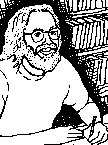Padre Manuel Arias Montes
Padre Manuel Arias Montes is the parish priest in the Jukilita neighborhood of Oaxaca. He explained two competing visions for the role of the church: one from above, and another from below. Arias always wanted to be with the people, and identifies with the popular church that approaches social issues from a community perspective. This work began 30 years ago with the arrival of Archbishop Bartolomé Carrasco in Oaxaca who put the church in favor of the poor and Indigenous peoples. Arias recounted a long history of exploitation and repression that people faced, with the government propagating systems of corruption and impunity. Governments become the worst caciques (chiefs) who take advantage of community members.
Arias painted a history that depicted the church as responsible for launching social struggles in Oaxaca, including training teachers and Indigenous leaders and Christian Base Communities. Often, however, the church hierarchy betrayed these struggles and abandoned people to repressive forces. This situation finally exploded on June 14, 2006 with mass protests in Oaxaca. The government responded with repression rather than dealing with the underlying social problems. Arias said that the church was the first one to come to the aid and support of the striking teachers. Priests built solidarity by making statements in support of APPO and bringing food to the strikers, even as the church hierarchy allied with the repressive government. The hierarchy showed a negative face of the church. Nevertheless, Arias and other parish priests continue to be determined to work with civil society to make important fundamental social changes.
Arias embraces the importance of Indigenous spirituality in his work, and points to the importance of Indigenous cosmologies to find solutions to problems that they face. Our meeting took place in a creation chapel that was decorated with a Mixteca symbol of tree of life that grew out of a sacred cave where god blew life into women and men. Arias also pointed to the important role of women, and what he termed the feminine face of the church and civil society struggles. He said that if priests maintain their authoritarian role they will remain alone, and women will continue with the more important work. Arias also said that at first the left attacked the church and especially the bishops for the stances that they took, but now the church has better relations with the left. The church’s more reflective stances also help strengthen class struggles.

